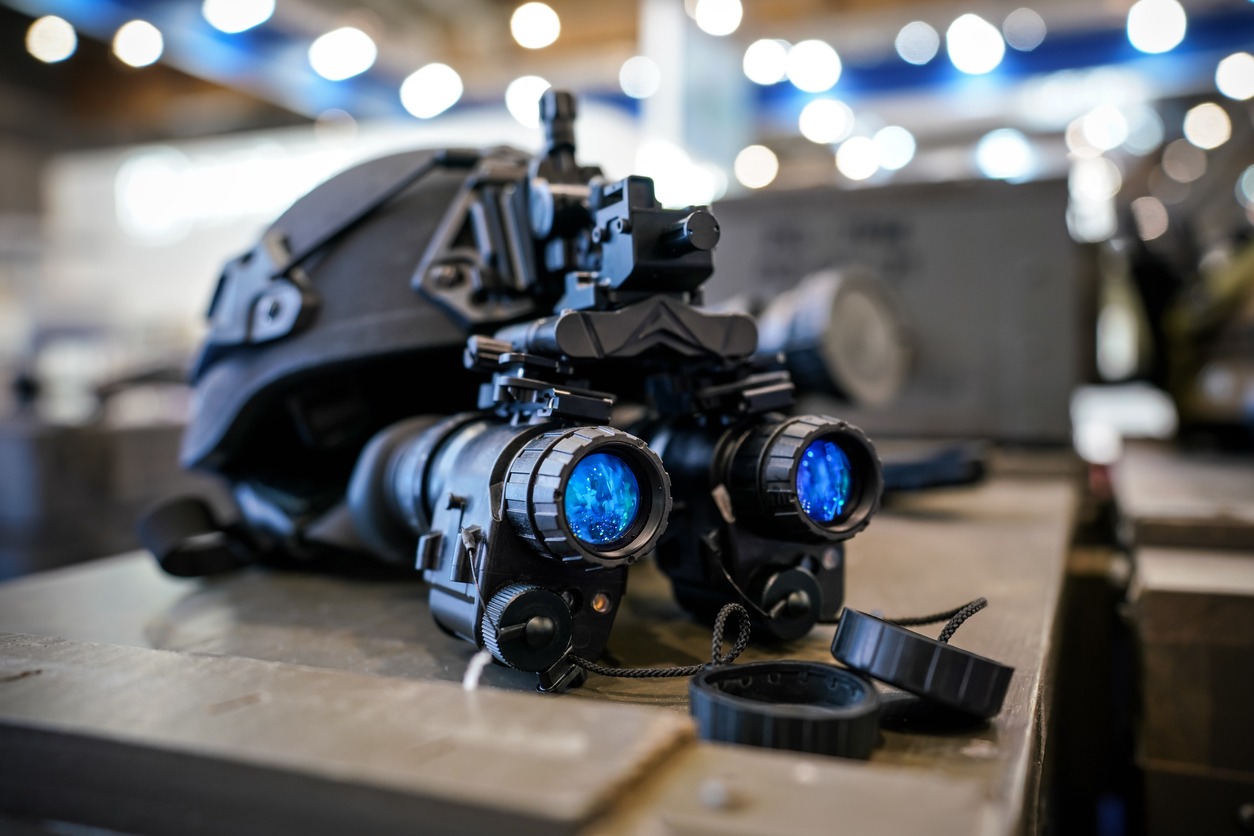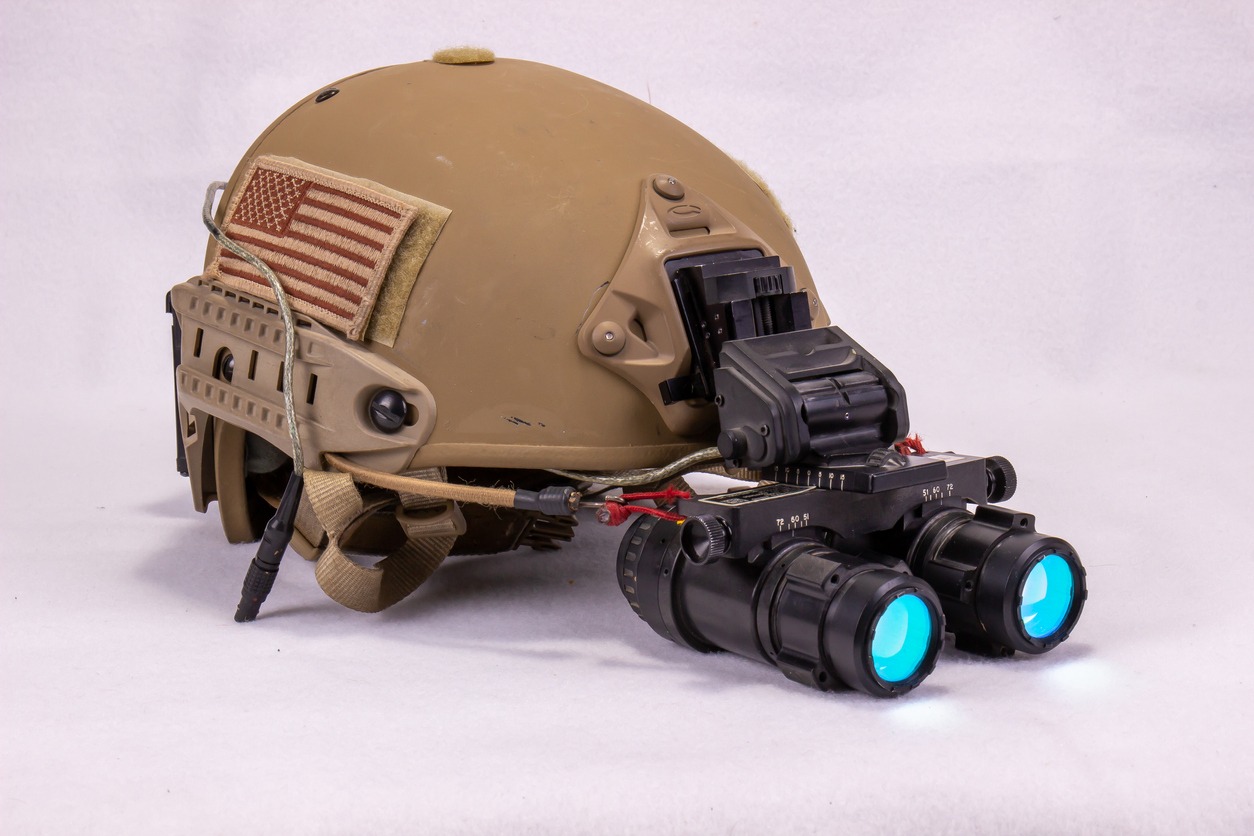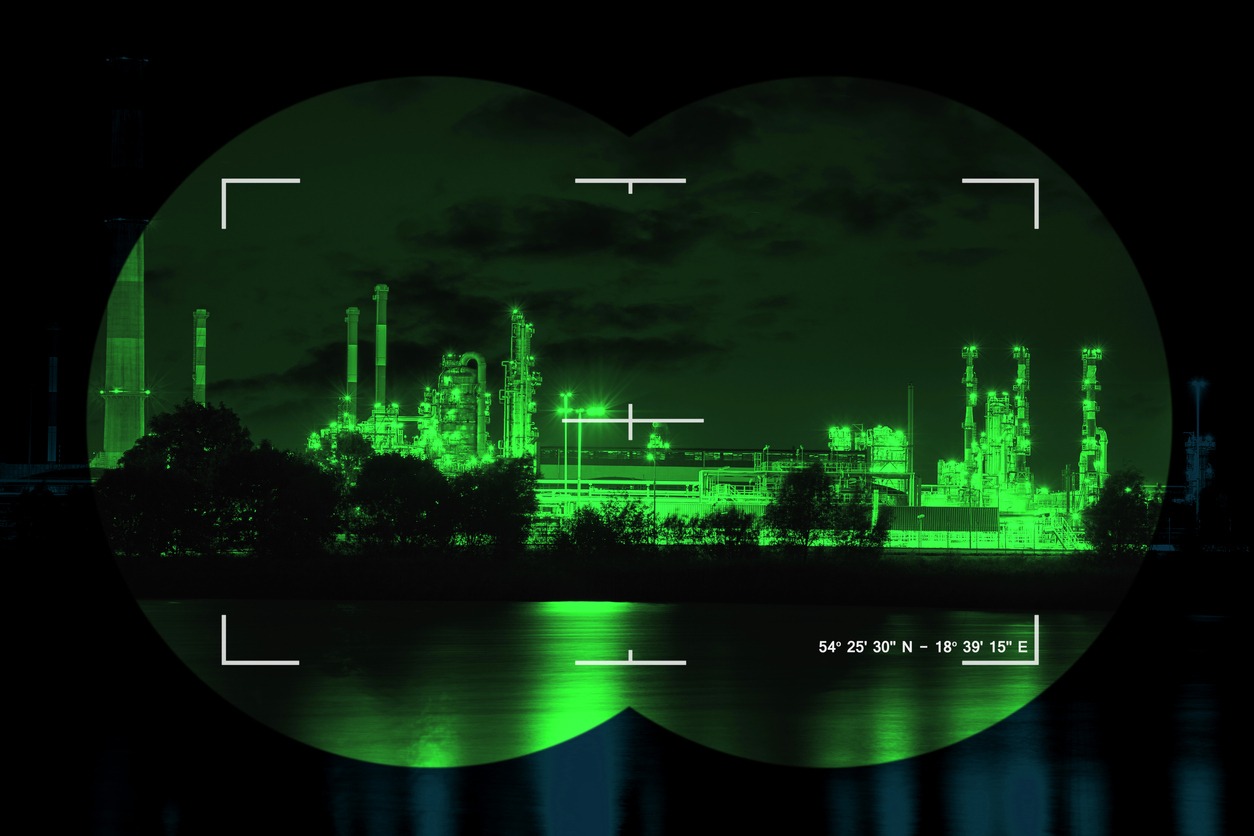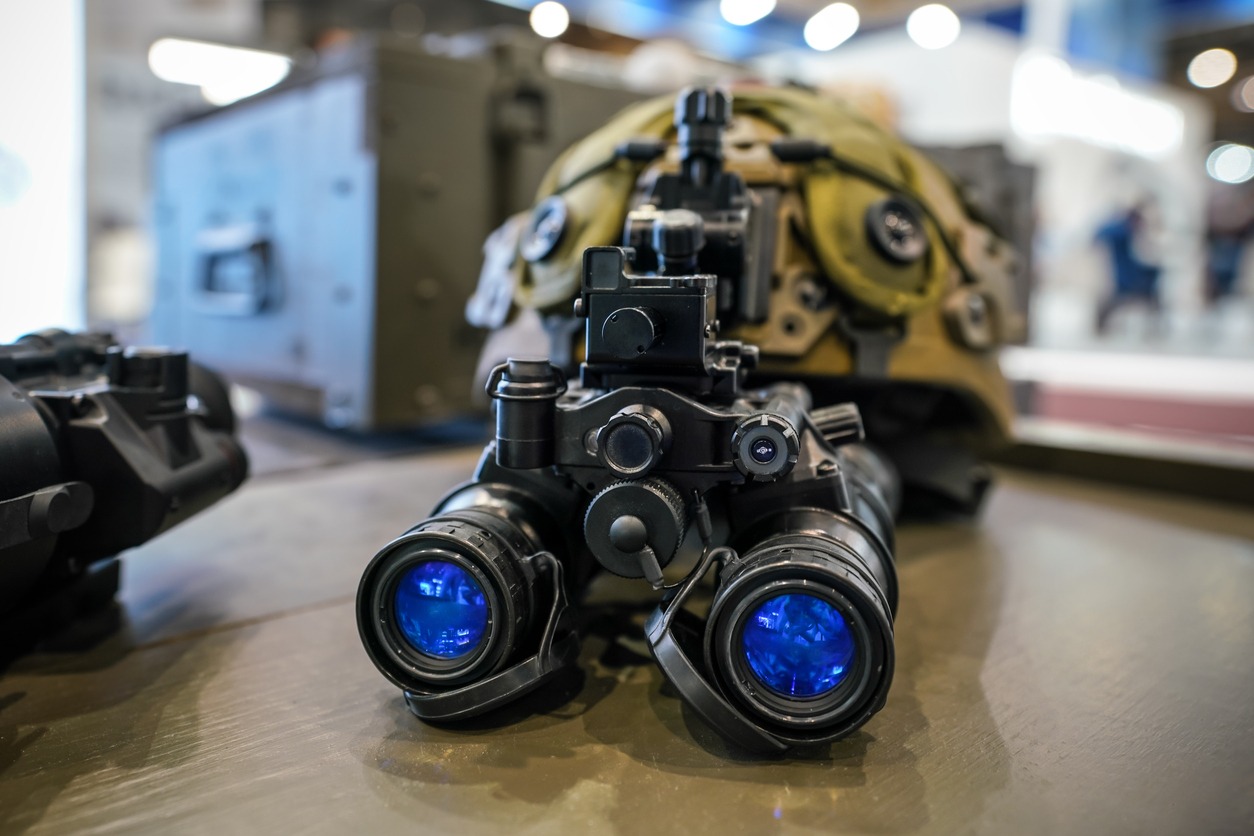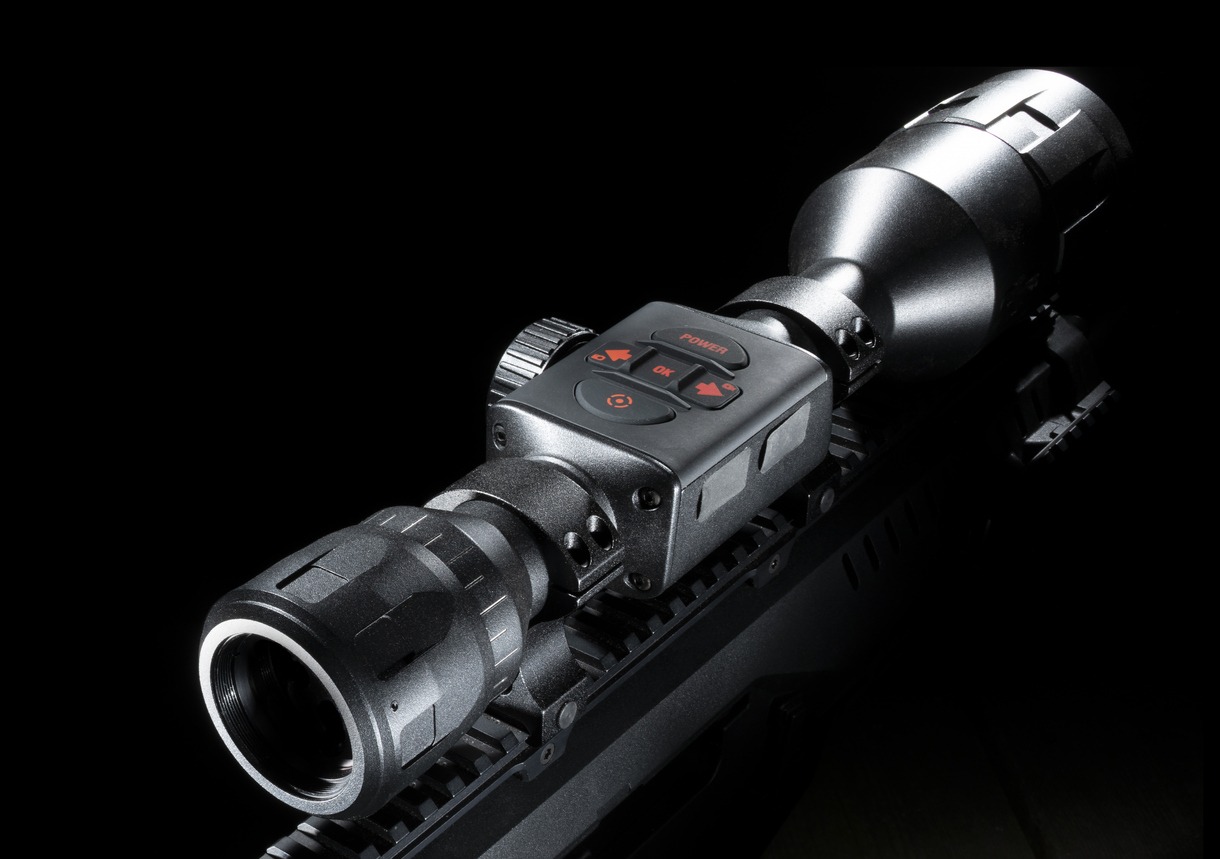You might associate night vision with spy or action movies, where characters wear night-vision goggles to navigate dark spaces on moonless nights. You may have wondered, “Do these devices really work? Can you truly see in the dark?” The answer is a resounding yes. With the right night-vision equipment, you can spot a person standing over 200 yards away on a moonless, cloudy night!
In this article, we’ll explore night-vision technologies and delve into various types of night-vision equipment and their applications.
What is Night Vision Technology?
Night vision technology allows you to see in low-light or dark conditions, and it is used in a variety of applications, including military, law enforcement, wildlife observation, and even consumer products. There are several different types of night vision devices, but they all work based on the principle of amplifying existing light or capturing light that is outside the visible spectrum.
How Night Vision Works
Night vision devices allow you to see in the dark, revealing people, animals, and objects up to 1,000 yards away on a dark night. Night vision monocular cameras even let you capture photos and videos of things hidden from your naked eye in the dark.
There are two key technologies behind night vision equipment. Traditional night vision devices employ optoelectronic image enhancement. They sense small amounts of infrared light bouncing off objects and then amplify this light electronically, creating the familiar greenish image. On the other hand, newer digital image enhancement technology captures available light with a digital image sensor and digitally enhances it in full color.
Night vision operates in two distinct ways, depending on the technology used:
- Image Enhancement: This method gathers faint light, including the lower part of the infrared spectrum, which might be imperceptible to our eyes, and amplifies it for clear viewing.
- Thermal Imaging: This technology captures the upper portion of the infrared light spectrum, emitted as heat by objects rather than reflected as visible light. Hotter objects, like warm bodies, emit more of this light than cooler objects, such as trees or buildings.
Understanding Infrared Light
To grasp how night vision operates, getting a handle on light is essential. The energy in a light wave is linked to its wavelength, where shorter wavelengths pack more energy. In the visible light spectrum, violet is the most energetic, while red is the least. Right next to this spectrum lies infrared light.
Infrared light is divided into three categories:
Near-infrared (near-IR): Closest to visible light, with wavelengths ranging from 0.7 to 1.3 microns (700 billionths to 1,300 billionths of a meter).
Mid-infrared (mid-IR): Spanning from 1.3 to 3 microns, both near-IR and mid-IR are utilized in various electronic devices, like remote controls.
Thermal-infrared (thermal-IR): This encompasses the bulk of the infrared spectrum, with wavelengths stretching from 3 microns to over 30 microns.
The crucial difference between thermal-IR and the other two is that thermal-IR is emitted by objects, not reflected off them. This emission of infrared light is rooted in the behavior of atoms at the atomic level.
Thermal Imaging
Now, let’s break down how thermal imaging works:
- A special lens focuses on the infrared light emitted by all objects in view.
- A phased array of infrared-detector elements scans the focused light, generating a detailed temperature pattern known as a thermogram. This array takes just a fraction of a second to capture the temperature data from thousands of points within its field of view.
- The thermogram created by the detector elements is converted into electric impulses.
- These impulses are transmitted to a signal-processing unit, a circuit board housing a dedicated chip that translates the data for the display.
- The signal-processing unit sends this information to the display, where it’s represented in various colors based on the intensity of the infrared emission. The combination of impulses from all elements creates the final image.
Understanding Optoelectronic Image Enhancement
In the past, older night vision gear relied on optoelectronic image enhancement. This tech involved a set of optical lenses and a unique electronic vacuum tube to seize and amplify both visible and infrared light reflected off objects nearby.
Here’s how it worked:
- The first lens, known as the objective lens, collected faint visible light from the subject and some light from the lower end of the infrared spectrum. This light consists of tiny particles called photons.
- These photons traveled through the objective lens into an image-intensifier tube. This tube is a special electronic vacuum tube powered by small AA or N-cell batteries and has two parts.
- The first part, called the photocathode, transformed the incoming photons into electrons. You might recall from science class that photons, neutrons, and electrons are all minuscule particles composing an atom. Photons and neutrons form the nucleus of an atom, while electrons whirl around the nucleus, carrying an electrical charge.
- The newly created electrons then moved to the second part of the vacuum tube called the microchannel plate (MCP). This MCP is a small glass disc containing millions of tiny holes, multiplying the number of electrons and amplifying the electric signal several thousand times.
- The electrons exited the image-intensifier tube and struck a screen coated with phosphors. These phosphors lit up when hit, producing a bright green image far brighter than the initial dim light that entered through the objective lens. You viewed this phosphor image through an ocular lens, which allowed you to focus and potentially magnify the image.
Why weren’t these traditional night vision images in color? It’s because converting photons into electrons stripped the color information, turning the original colored light into a black-and-white image. Green phosphors were chosen as green is the most comfortable color to view for extended periods in the dark.
Understanding Digital Image Enhancement
Today, most night vision devices utilize a digital take on traditional optoelectronic image enhancement. Digital image enhancement results in smaller, lighter, and more adaptable night vision devices.
Here’s how digital night vision works:
- Light entering through the objective lens is transformed into a digital signal using a complementary metal-oxide-semiconductor (CMOS) sensor akin to those found in digital video cameras.
- The digital image is electronically enhanced and magnified several times, then transmitted to an LCD display for viewing. The size of the CMOS sensor dictates the image’s resolution, with many current digital night vision devices showcasing full 1080p HD video.
- In addition to direct viewing on the LCD screen, many digital night vision devices can link up with other gadgets like still or video cameras for remote viewing. Digital night vision signals can be stored digitally on SD cards, USB drives, or other storage devices. Some digital night vision devices even offer Wi-Fi functionality, simplifying the sharing and live-streaming of videos and images to smartphones, computers, and more.
Digital technology has brought about a revolution in the night vision industry. Each new generation of CMOS sensors has delivered higher-quality images at more affordable prices. While early digital night vision devices couldn’t match the details of traditional optical images, today’s devices produce incredibly high-resolution displays. Some top-tier digital night vision devices even provide color images rather than the classic glowing green.
Generations of Night Vision Devices
Night vision devices (NVDs) have evolved over the past decades and are categorized into different generations, each signifying a significant technological leap.
- Generation 0: The initial night-vision systems used in World War II and the Korean War utilized active infrared technology. An IR Illuminator projected near-infrared light (invisible to the naked eye), which reflected off objects and was captured by the NVD’s lens. However, these systems had issues with image distortion and a short tube lifespan. They were also vulnerable to enemy detection due to the visible infrared beam.
- Generation 1: This generation shifted to passive infrared technology, named “Starlight” by the U.S. Army. Instead of relying on projected infrared light, Generation-1 NVDs harness ambient light from the moon and stars and the normal reflected infrared in the environment. While more covert, they struggled in cloudy or moonless conditions and still faced image distortion and tube longevity problems.
- Generation 2: Major improvements in image-intensifier tubes led to Generation-2 NVDs, offering enhanced resolution and performance. These devices performed significantly better in low-light conditions, even on moonless nights, thanks to the addition of a microchannel plate (MCP) to the image-intensifier tube. The MCP not only amplified electrons but also reduced image distortion.
- Generation 3: Currently employed by the U.S. military, Generation-3 NVDs maintain the technology of Generation 2 but exhibit even greater resolution and sensitivity. They use a photocathode made of gallium arsenide, which is efficient at converting photons to electrons, and the MCP is coated with an ion barrier, extending the tube’s lifespan.
- Generation 4: Sometimes called “filmless and gated” technology, Generation 4 NVDs offer substantial improvements in both low- and high-level light environments. By removing the ion barrier from the MCP, they reduce background noise, enhancing the signal-to-noise ratio. An automatic gated power supply system allows for rapid response to lighting changes, making them highly adaptable in shifting light conditions.
Many budget night-vision scopes use Generation-0 or Generation-1 technology and may not meet professional sensitivity expectations. Generation-2, Generation-3, and Generation-4 NVDs tend to be more expensive but are durable if properly maintained. Additionally, an IR Illuminator can be helpful in extremely dark areas with minimal ambient light.
Different Kinds of Night Vision Devices
Night vision gadgets come in various types, each with its unique appearance and specific uses:
1. Night Vision Monoculars
These devices resemble a tube designed for single-eye observation. They are the most common and cost-effective option, known for their compact size, lightweight, simplicity, reliability, and affordability. Monoculars can be handheld or attached to a helmet.
2. Night Vision Binoculars
Binoculars can be used for civilian or military purposes. The key distinction between binoculars and monoculars is that binoculars provide vision through both eyes, offering a more accurate and realistic assessment of your surroundings. They are pricier because they consist of two interconnected monoculars. These devices deliver a clear and well-defined image.
3. Night Vision Goggles (NVG)
Picture this – take one monocular, shorten it, and transform it into two tiny binoculars for each eye. That’s the basic concept behind night vision goggles. NVGs come in two types: binocular and pseudo-binocular. Binocular NVGs comprise two identical night vision channels for each eye, forming a stereoscopic image. These are handy for nighttime driving.
Pseudo-binocular NVGs are more common, especially for safety and security applications. They employ one lens and one Electron Optical Converter (EOC), and a pseudo-binocular microscope dilutes the EOC’s screen image to both eyes. While pseudo-binocular NVGs have a reduced weight and cost, they don’t provide distance adjustment features, estimating the object’s distance adequately.
4. Night Vision Rifle Scopes
Designed for nighttime hunting and military operations, night vision rifle scopes differ from other night vision devices. They share optical concepts with night vision monoculars but include a reticle, alignment mechanism, and a rifle mount for secure attachment to firearms. These scopes are known for enhanced durability and protection against mechanical damage, as they are frequently exposed to recoil.
These night vision devices each serve distinct purposes for surveillance, tactical operations, or nocturnal adventures. The choice depends on your specific requirements and intended use.
5. Cameras
Cameras equipped with night-vision technology can transmit the image to a monitor for display or to a VCR for recording. These are used when permanent night-vision capability is needed, like on a building or as part of equipment in a helicopter. Many newer camcorders come with built-in night vision.
Types of Night Vision Technology
Night vision technology comes in several different types, each with its unique characteristics and applications. Let’s explore these categories:
- Active Infrared Night Vision Devices: These instruments emit an infrared beam to illuminate the target and then convert the reflected infrared image into visible light for nighttime observation. They have found use in military night vision, vehicle driving, surveillance, and photography. While they perform well in complete darkness and are budget-friendly, they have limitations, such as shorter viewing distances and the risk of being detected by the observed party. In recent times, they have been primarily used in civilian night vision equipment.
- Low-Light Night Vision Devices: Operating by enhancing low-brightness sources like the night sky, stars, moonlight, and atmospheric glow reflected by the target, low-light night vision devices amplify these sources by hundreds of thousands of times. They are suitable for naked-eye reconnaissance, observation, aiming, nighttime driving, and various battlefield operations. They work passively, which makes them suitable for discreet operations like those carried out by military and law enforcement agencies. Low-light night vision devices have evolved into three generations, with the third generation being technically mature and cost-effective. They are widely used across various industries.
- Thermal Imaging Infrared Instruments: These devices function based on the principle that all objects radiate infrared rays, dependent on their absolute temperature above absolute zero. By detecting the difference between the target’s infrared radiation and the background, thermal imaging cameras can identify and locate objects, even in conditions with obstacles like smoke, fog, or trees. This technology offers a comprehensive view of people, animals, vehicles, and more, day and night. However, due to their high cost, they are mainly used in the military. Yet, the applications of thermal imaging technology are expanding in sectors like power, industrial inspection, fire and medical services, disaster relief, and more.
- Laser Night Vision Devices/Night Vision Systems: These versatile devices have applications in border defense, military, public security, cultural heritage protection, oil fields, industrial and mining sites, factories, fisheries, and various other fields. They are ideal for all-weather, nighttime, zero-light surveillance. Laser night vision operates similarly to infrared night vision but offers an extended observation distance, sometimes spanning several kilometers. These devices are well-regarded for their technical excellence and are currently gaining traction in the market. While they have bright prospects, they can be relatively expensive.
Applications of Night Vision Technology
Night vision finds various applications in different fields:
- Military: Night vision was originally developed to spot enemy targets at night and is still widely used for that purpose. It’s also employed for navigation, surveillance, and targeting.
- Law Enforcement: Police and security agencies often use both thermal imaging and image-enhancement technology, particularly for surveillance.
- Hunting: Hunters use night-vision devices to move through the woods during nighttime.
- Wildlife Observation: Nature enthusiasts use night-vision equipment to observe wildlife in their natural habitats without disturbing them.
- Surveillance: Many businesses install permanently mounted night-vision cameras to monitor their surroundings.
- Security: Night vision aids in securing properties and facilities by providing enhanced surveillance at night.
- Navigation: Night vision helps with safe navigation in low-light or no-light conditions.
- Hidden-Object Detection: Thermal imaging can reveal signs of disturbance, such as recently dug-up ground, which can be valuable in investigations.
- Entertainment: Night vision has found its way into the entertainment world, adding a unique perspective to filmmaking and recreational activities.
Detectives and private investigators use night vision for covert surveillance, and businesses often employ it for security purposes. Thermal imaging, in particular, can reveal hidden items or alterations to surfaces. Night-vision devices can be invaluable for camping and hunting enthusiasts, provided you choose the right type for your specific needs.
As night falls, a whole new world emerges, and night-vision technology opens up exciting possibilities for exploration and security.
Practical Uses of Night Vision Technology
Here are the ways that people – especially law enforcement and military personnel – can use night vision and thermal imaging devices in the field:
- Locating Eluding Vehicles on Pursuits: In vehicle pursuits, the fleeing car can easily disappear into the night. With an infrared (IR) scope, even a dark parked vehicle stands out, making it easier to track.
- Building Searches: When searching a dark building, turning on lights or using a flashlight can reveal your position to intruders. Night vision allows you to maintain cover in darkness and spot potential threats.
- Wide Area Searches: In vast outdoor areas like wooded regions or open meadows, it’s easy to miss someone, even when you’re close. Infrared makes your objective stand out, even in pitch darkness.
- Finding Lost Children and Seniors: Children and seniors can wander away from home, often leading to a race against time to find them. IR is invaluable for locating them, even in concealed urban spaces.
- Locating Abandoned Property: Objects abandoned by fleeing suspects may have a different temperature from their surroundings, making them noticeable with thermal imaging, especially just after they’re discarded.
- Identifying Homeless Camps: Vehicles used as shelters at night emit more heat than surrounding ones. Hidden campsites may reveal themselves through their thermal signature.
- Tagging K9s and Tactical Teams: Infrared strobes and beacons, invisible to the naked eye, are easily seen through an IR scope. Tagging tactical officers and K9 units helps keep track of them without exposing their positions.
- Monitoring Tactical Operation Perimeters: Surveillance duty at the perimeter of a wide-area search can be monotonous, but a night vision scope ensures nothing goes unnoticed.
- Looking for Burglars: Burglars and prowlers often lurk in neighborhoods, waiting for opportunities or hiding when discovered. Night vision devices reveal fewer hiding spots and improve surveillance.
Conclusion
the world of night vision technology offers diverse devices, each with unique strengths and applications. In making a choice among these technologies, it’s essential to consider your specific needs and priorities, ensuring the selection of the right night vision device for the task at hand. Whether for military, public safety, tourism, or other sectors, these devices are vital in enhancing nighttime visibility and safety.
If the cost of purchasing night vision equipment is a concern, some commercial vendors offer loaner programs for agencies to test the devices in the field. Night vision technology is becoming more affordable and can have various practical applications in law enforcement and public safety.
